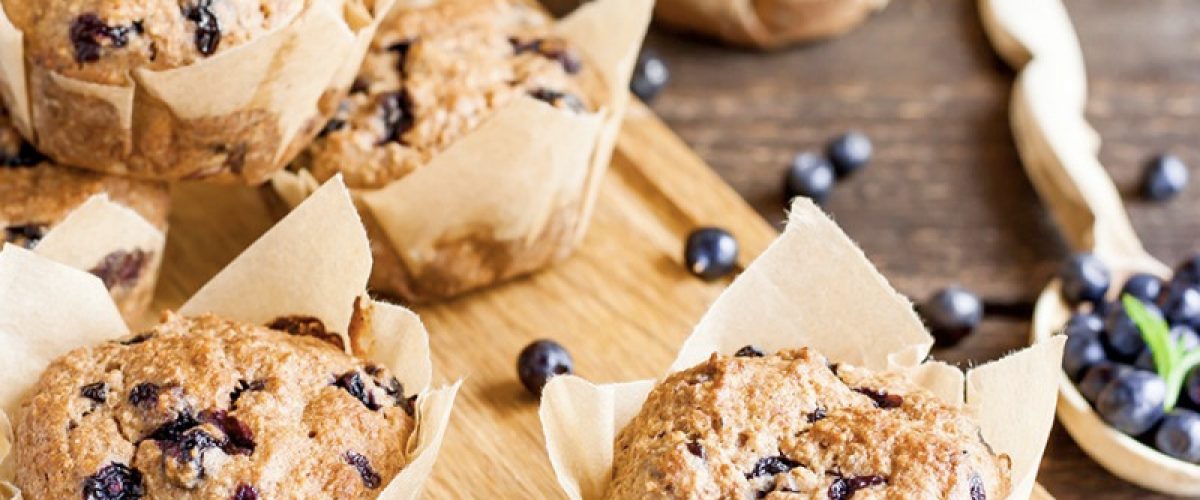Baking with Almond Flour | Muffins

Baking Muffins with Almond Four
Baking muffins with almond flour can be easy and fun, especially when you know the tips and tricks of how to get the results you want. It is possible to make dairy and gluten-free muffins with Nature’s Eats Almond Flour, but in this article, we will mainly be focusing on baking muffins with almond flour and gluten-free foods rather than dairy-free foods.
Anytime you are using almond flour as a replacement for traditional all-purpose flours you must consider that you may need to make some adjustments for the recipe to accommodate the density and difference in the texture of the almond flour. It is easy to make gluten-free foods using almond flour, and when it comes to baking muffins with almond flour, you can quickly turn the muffins into high protein muffins.
When using almond flour for baking the adjustments necessary for cookies will be different than for muffins, pastries or cake. It comes down to what you are baking with the almond flour and if you are trying to keep the baked goods completely gluten-free foods. For the sake of baking muffins with almond flour, we are assuming that we are working to keep these muffins gluten-free foods, although if you are seeking to make dairy and gluten-free muffins, you can experiment with your recipe by substituting the eggs with alternative egg replacers.
Almond flour tends to be denser than most other flours. It is important to use a binder when baking muffins with almond flour to keep things properly blended.
You will find that we use ingredients that keep the muffin recipes almost 100% dairy and gluten-free muffins since we are not using milk or cream with dairy. Not all of the recipes are dairy-free and gluten-free muffins because the recipes sometimes call for eggs. In our blog, Baking with Almond Flour: Cookies, we have included a list of egg replacements that can be used. The list is also included in the lower portion of this article. It is a guideline you can experiment with when baking your muffins with almond flour or anytime you may want to use an egg replacement in a recipe.
When you are baking cookies and muffins, the results can be entirely different. With cookies, you may be seeking a soft cookie, or you may instead desire a harder cookie texture. With muffins, we are aiming to achieve a soft, moist muffin on the inside similar to a cake texture, but with a firmer delicious, almost crispier top. Therefore when baking muffins with almond flour, we want to include certain ingredients and use baking techniques that will achieve this final goal.
When you are baking with almond flour to make muffins there are two things you should know:
Since almond flour is denser than traditional flours, the muffins can sometimes end up crumbly, dry and almost more like cornbread that has dried out rather than a soft, fluffy muffin with a crustier top.
Since the density of almond flour also makes it heavier, it is important to make sure you have enough of the right ingredients to make the muffin raise, so you have the perfect muffin top rather than muffins that sink in. We’ll show you how to create the muffins you desire.
If you are gluten-free, you may have already noticed that many gluten-free foods and gluten-free snacks tend to have a different texture. They are not always soft and airy, and since gluten is a binder when you are baking with almond flour, you will need to make sure you add in an alternative binder to support the success of the recipe.
You will want to keep the muffins light, fluffy, and moist just like a traditional muffin should be. While experimenting, I found that a little bit of kitchen alchemy goes on to make these adjustments that will create the right results with the muffins. I have also found that eggs come in very handy to help accomplish the perfect texture. The egg and almond flour combo will also give you high protein muffins that in most cases are paleo diet-friendly. If you do require an egg replacement read our article, Baking with Almond Flour: Cookies. If you are vegan and want to make muffins without using eggs, do not be discouraged. It is possible to create great muffins without eggs, but it may require a little trial and error until you find the perfect replacement that works for you. Here is a list of egg replacements for vegan baking plus the conversion table.
Replacements for One Egg
½ mashed banana
¼ cup unsweetened pureed fruit like applesauce, pears or prunes
¼ cup pureed tofu + 1 tablespoon flour
¼ cup canned pumpkin puree
One flax egg (1 tablespoon ground flax plus 3 tablespoons water). Mix and let sit for 5 minutes.
¼ cup sour cream or plain full fat yogurt
Each of the recipes referenced below will produce a slightly different result which can also give you options depending on what type of muffins you prefer.
In my experimentations in the kitchen, I made the Apricot Blueberry Gluten-Free Muffins and decided to leave out any other kinds of flours, sticking to almond flour only. The final result made these muffins slightly denser than the Raspberry Gluten Free Chocolate Chip Muffins. The baking powder helped them raise and get slightly fluffy. However, the almond flour by itself tends to make muffins denser, unlike the Raspberry Gluten Free Chocolate Chip Muffins that included some alternative flours like coconut flour and arrowroot flour. Coconut flour also tends to be denser than traditional flour. This type of muffin works well for a paleo diet and includes lots of healthy fats.
In both of the recipes for the Apricot Blueberry Gluten-Free Muffins and the Raspberry Gluten Free Chocolate Chip Muffins we used eggs, so they are considered high protein muffins. They are both also fantastic gluten-free snacks that bring much more nutritional gain than a traditional muffin that you may snack on for breakfast. The Apricot Blueberry Gluten-Free Muffins tend to be slightly denser since they call for more almond flour.
I found that when you use eggs or egg replacements in the muffin recipe, you may need to cook them slightly longer or increase the amount of flour. Otherwise, they will tend to be mushy in the middle. I made a couple of batches where I incorporated apple sauce, and it seems like the center of the muffins never did quite solidify enough.
In the recipe for the Raspberry Gluten Free Chocolate Chip Muffins rather than just using Nature’s Eats Almond Flour, we also used arrowroot flour and coconut flour. However, you could also use other options like tapioca flour, oat flour, cassava flour, and all-purpose gluten-free flour and this will help make your muffins moister, lighter and fluffier. Again, all these suggestions are geared toward gluten-free foods, and if you are not concerned about gluten, you can also add in regular all-purpose flour, whole wheat flour or a different flour of choice.
I found that the muffins stayed better when stored in an airtight ziplock bag in the refrigerator rather than leaving them on the countertop. You can also freeze these muffins and enjoy them at a future date. They are fantastic gluten-free snacks for anyone in the family from the kids to the adults. They are a perfect way to start your day with a breakfast that has higher levels of protein and good fats rather than empty, highly caloric options.
The almond flour helps with the muffins in a variety of ways. When you are baking muffins with almond flour, you are reducing the sugar content, making to easier for your body to metabolize the sugar as it slows down the process. The use of almond flour as a replacement for traditional flours may increase the fat levels. However, it is bringing in more good and healthy fats which will leave you happier and healthier with fewer cravings for that second or third muffin. Lastly, baking muffins with almond flour increases the protein in each muffin, and high protein muffins are simply a better choice for health rather than traditional, unhealthy muffins.
Not all gluten-free foods are good for you. I learned this in a rather painful way while releasing gluten from my diet and life over the last five years. I started to eat gluten-free foods from the market only to learn that they were full of added sugars and other ingredients I couldn’t even pronounce. These ingredients were equally as toxic as the gluten was for my body. Also, not all these gluten-free foods tasted good and left me rather disappointed. I discovered a gluten sensitivity about five years ago, and although it wasn’t a matter of life and death if I ate it, I did see noticeable differences in my overall weight and energy levels. This took me on a journey of self-discovery when it came to foods that made my body thrive, and led me to make more and more foods at home.
I was never a cook, a chef, or a baker, but my commitment to feeling good, healthy eating, and longevity were strong. I began to learn, to explore, to experiment, and found things like these recipes that could help me make transitions of eliminating the foods that were full of additives, preservatives, and other ingredients that weren’t making me feel good. My “why” grew stronger as I saw more and more people around me having to make their health a priority due to chronic disease and other health challenges.
I can promise you one thing, it may not be easy, and you may make some mistakes along the way and learn some lessons, but it’s worth it. It is worth taking the time to try new recipes and find ways to keep your taste buds happy and do it in a way that is easy to prepare right in your kitchen. I invite you to explore with me in baking with almond flour.
Be brave! Follow our series and try out some of these recipes. Make creative variations using different ingredients as you learn more about how easy it is to bake with almond flour, whether you are making muffins, cookies, cakes, pizza dough, waffles, pancakes or pastries. You are worth the investment of time, energy, and curiosity. And in the end, it will be worth all the effort that you’ve invested in your health.
Written by Lisa Saremi
